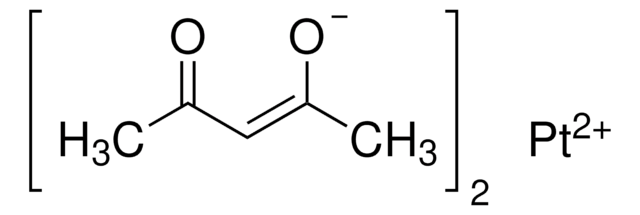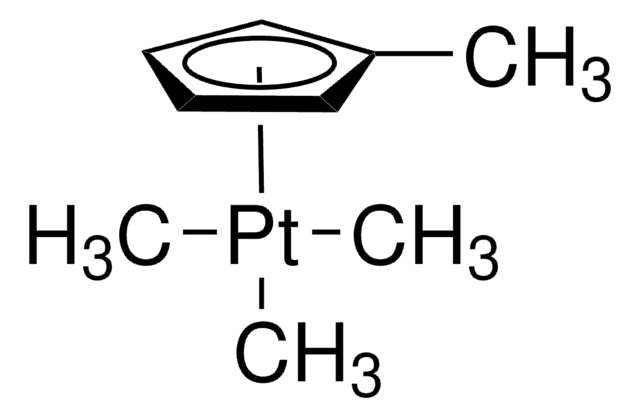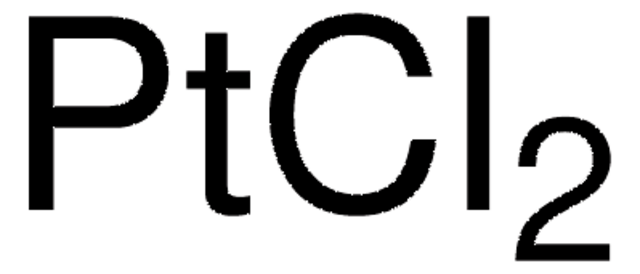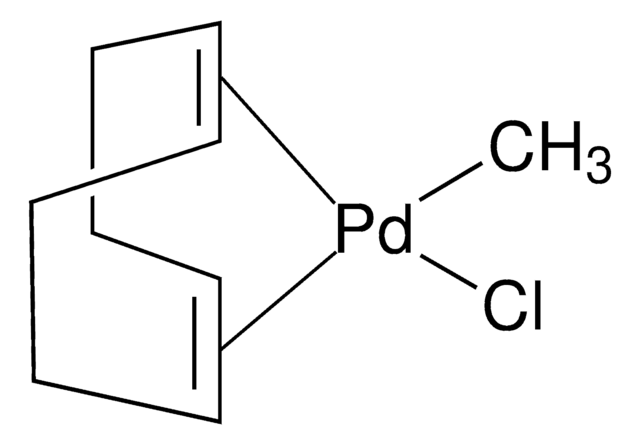282782
Platinum(II) acetylacetonate
97%
Sinonimo/i:
2,4-Pentanedione platinum(II) derivative, Pt(acac)2
About This Item
Prodotti consigliati
Livello qualitativo
Saggio
97%
Forma fisica
solid
Impiego in reazioni chimiche
core: platinum
reagent type: catalyst
Punto di fusione
249-252 °C (lit.)
Stringa SMILE
CC(=O)\C=C(\C)O[Pt]O\C(C)=C/C(C)=O
InChI
1S/2C5H8O2.Pt/c2*1-4(6)3-5(2)7;/h2*3,6H,1-2H3;/q;;+2/p-2/b2*4-3-;
KLFRPGNCEJNEKU-FDGPNNRMSA-L
Cerchi prodotti simili? Visita Guida al confronto tra prodotti
Descrizione generale
Applicazioni
- In the preparation of N-allylanilines by the direct use of allylic alcohols. Anilines with electron-donating groups give good yields.
- For selective N-allylation of 2,3-disubstituted indoles in water.
It can be used as a starting material in the preparation of platinum-lead nanoparticles supported on carbon. The PtPb/C catalyst exhibits enhanced electrochemical activity towards methanol and formic acid oxidation.
Avvertenze
Warning
Indicazioni di pericolo
Classi di pericolo
Acute Tox. 4 Dermal - Acute Tox. 4 Inhalation - Acute Tox. 4 Oral - Eye Irrit. 2 - Repr. 2 - Skin Irrit. 2 - STOT SE 3
Organi bersaglio
Respiratory system
Codice della classe di stoccaggio
11 - Combustible Solids
Classe di pericolosità dell'acqua (WGK)
WGK 3
Punto d’infiammabilità (°F)
Not applicable
Punto d’infiammabilità (°C)
Not applicable
Dispositivi di protezione individuale
Eyeshields, Gloves, type P3 (EN 143) respirator cartridges
Scegli una delle versioni più recenti:
Possiedi già questo prodotto?
I documenti relativi ai prodotti acquistati recentemente sono disponibili nell’Archivio dei documenti.
I clienti hanno visto anche
Il team dei nostri ricercatori vanta grande esperienza in tutte le aree della ricerca quali Life Science, scienza dei materiali, sintesi chimica, cromatografia, discipline analitiche, ecc..
Contatta l'Assistenza Tecnica.













